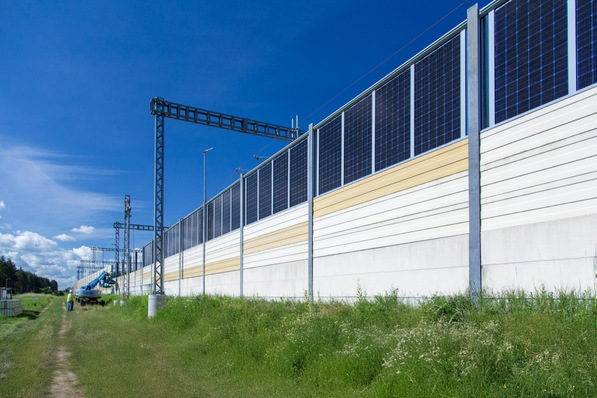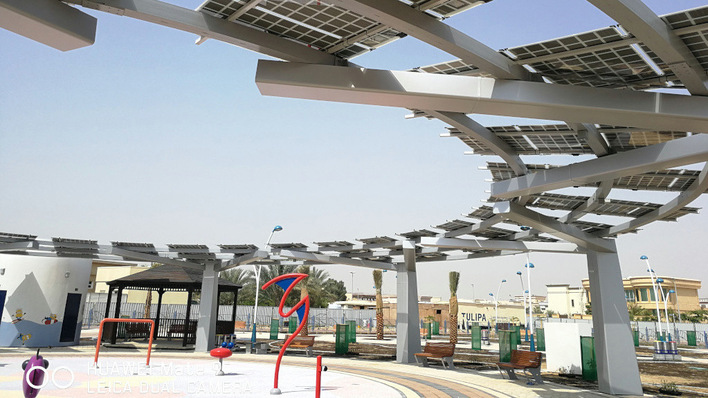Taking the energy transition into their hands and at the same time creating their own energy price cap: That is the goal pursued by Group 24, an information technology company in Gescher, Münsterland. A solar plant with 750 kilowatts has long been supplying abundant electricity from the roof. But now the company has decided to use the south-facing facade for electricity production as well.
140 modules bonded to the wall
Since the integration of normal glass modules would have required a huge effort due to their heavy weight, the solar planner Onsatech from near Osnabrück suggested simply installing lightweight modules on the facade. These consist of two plastic composite panels between which the solar cells are laminated. The craftsmen from Dachtechnik Sicon and Enles Solar bonded a total of 140 of these monocrystalline modules from the manufacturer Sunman directly onto the existing facade in two rows - without a complex substructure.
See also: Megasol and Saint-Gobain enter partnership for solar facades
Optimised light yield
The surface structure of the modules is optimised for light yield, so that the incident sun rays can be optimally used to generate renewable energy, even when installed vertically. Sunman has also steadily improved the performance of its solar modules in recent years. As a result, they now achieve almost the same efficiency as glass modules - and the same output.
This is 360 watts for each of the modules. With these additional 50 kilowatts, the total output of the Group 24 systems rises to over 800 kilowatts. Among other things, the more than 35 EVs and hybrid vehicles of the IT service provider use them to recharge their batteries. On sunny days, this could amount to up to five megawatt hours in the future.
Even more advantages
But the solar facade does not only produce electricity. The modules also make the facade look attractive and eliminate glare, says Christian Hornhues, CEO of Group 24, describing the three advantages. In the meantime, the consistently positive response to the appearance of the facade has already led to many queries from others regarding the technology used.
Effortlessly integrated into existing systems
For Malte Sulkiewicz, Marketing Manager at Onsnatech, the project shows where lightweight modules such as those from Sunman can play to their strengths and where they can also be effortlessly integrated into an existing system. "Depending on the requirements, you can get the most out of the possible installation space on the company building as well as on the private house," says Sulkiewicz.
Also interesting: A solar brick to transform buildings into energy generators
Extensive information about the system status
Group 24 always informs its employees about the status of this optimum on a daily basis. For this purpose, a display from Solarfox was installed in the company's entrance area, showing how much energy the system is currently producing and the current fill level of the battery that was installed in the building at the time. After all, the Tesvolt storage system can temporarily store 500 solar power. This way, the colleagues always know whether they can still fill up their electric vehicle at one of the Group 24 fast charging stations - without additional energy costs and in an environmentally friendly way. (su/mfo)







